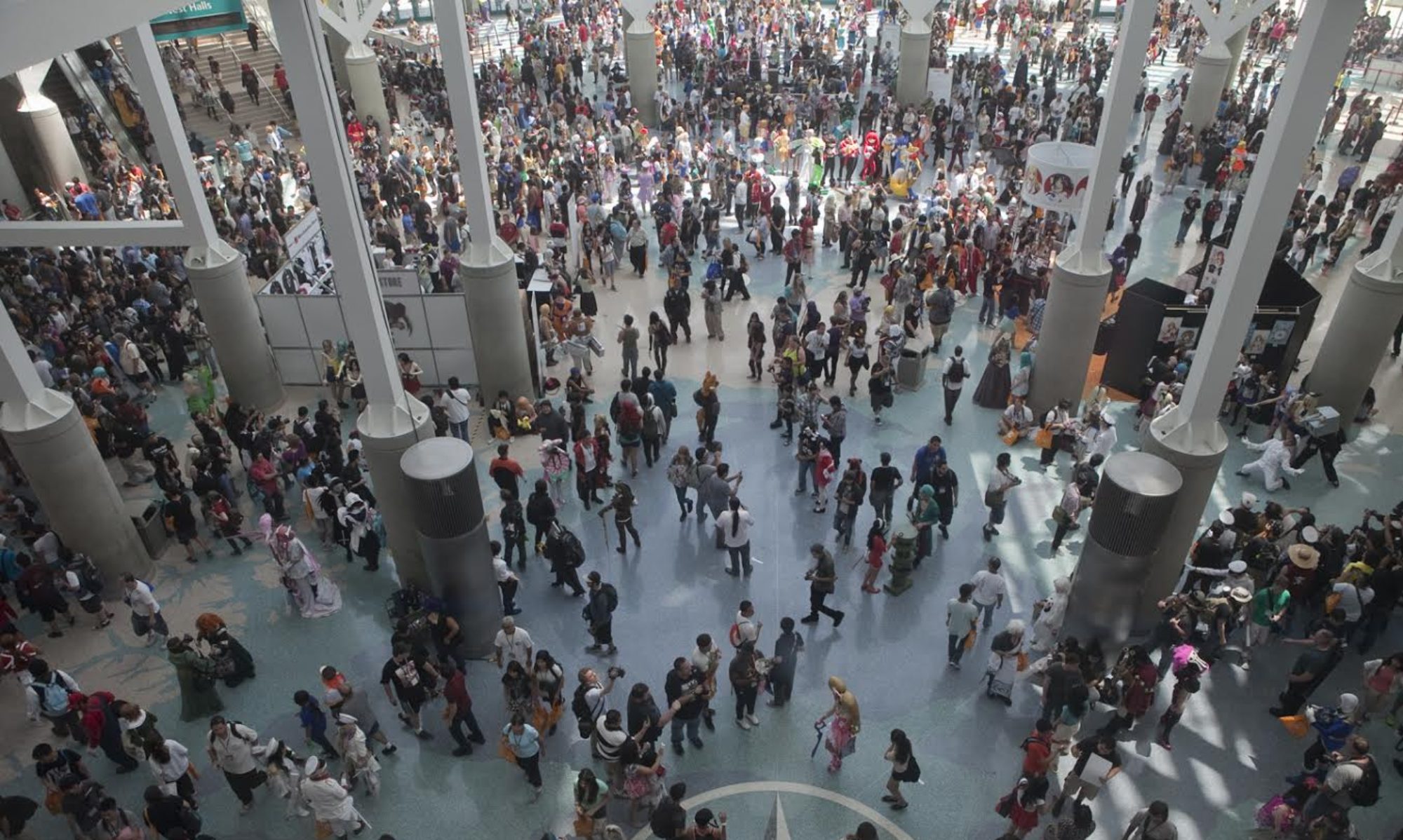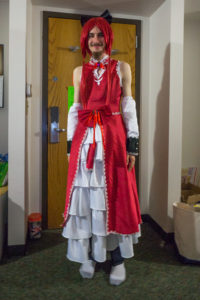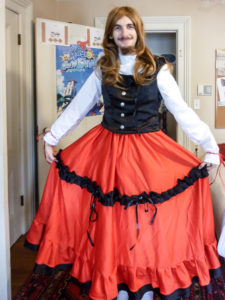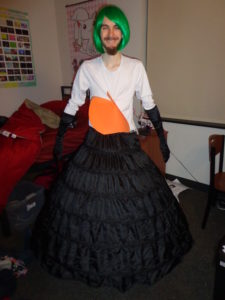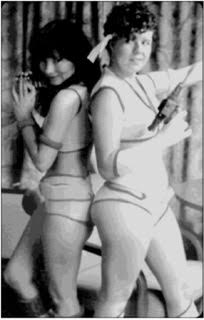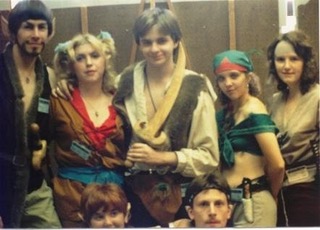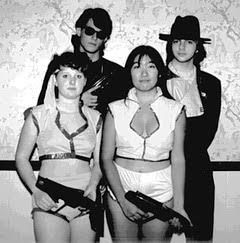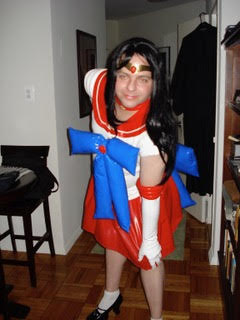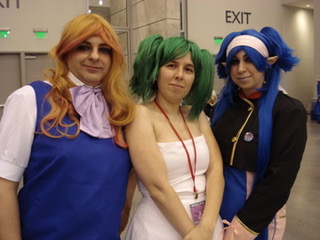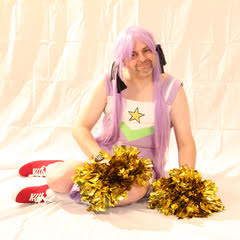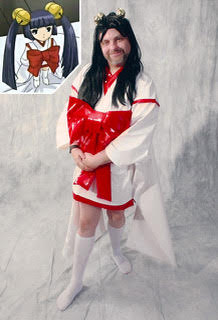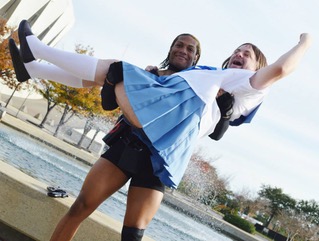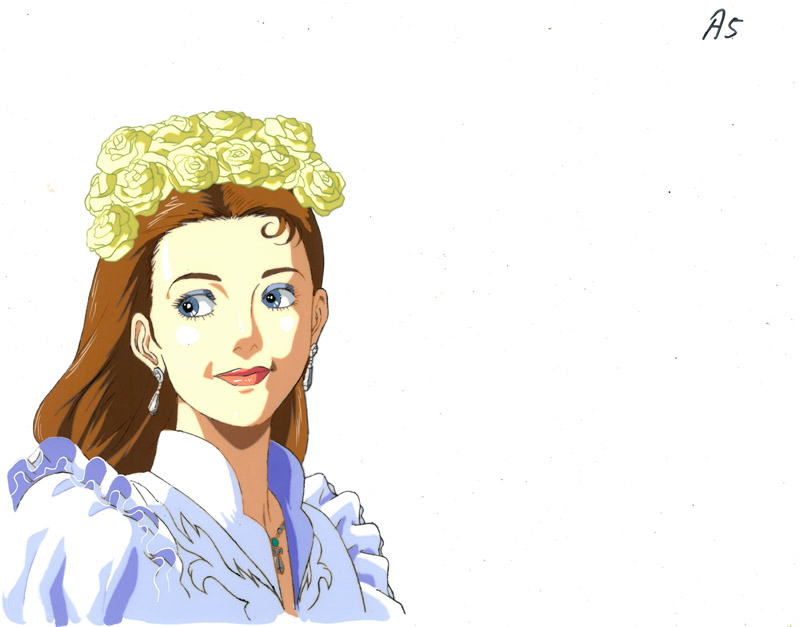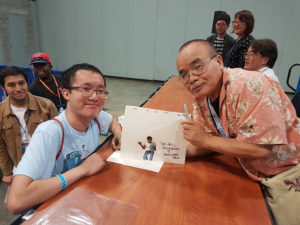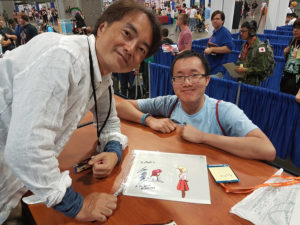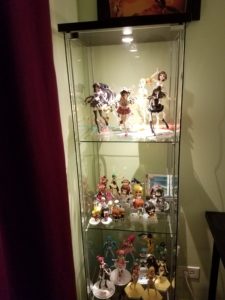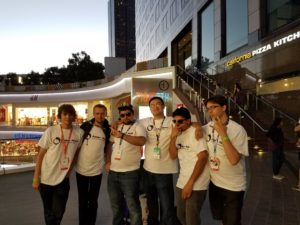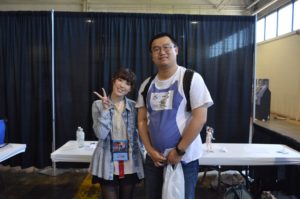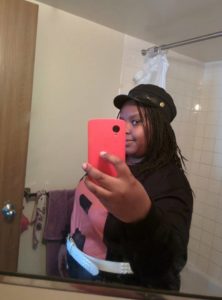Age: 22
Location: California
When did you discover anime? Share as much as you remember. When it comes to anime, I feel like my story is a bit of an odd one. I only thought of anime to be some cartoon, considering the first time I ever watched an anime was when I was 5 years old. My first anime ever was Yu Yu Hakusho, but I had only seen it as a cartoon, or rather, that was the label I stuck with since I didn’t know it was called “anime.”
I kept on watching the stuff I’d see on Cartoon Network and Toonami actively, up until Toonami’s departure from TV as a whole, so I was a bit lost and didn’t know where to continue Naruto from, since that was the big thing at the time for people my age, which, I was 9 years old I think?
I went onto Youtube and typed in “Naruto vs Sasuke”, only to find a bunch of AMVs, but I was under the impression that Naruto had died at the end of one of them, so I cried pretty hard at first until, at the end of the AMV, there was a little message. “Want to see more like this? Then go to [pirate site redacted]”, which made me laugh at first, but when I went onto the website, I was so amazed at what I had seen. There were so many anime, subbed, dubbed, I didn’t even know what it meant, I just kept on shouting at the screen, being all like… “THAT WASN’T ON TOONAMI, NOR WAS THIS. WHAT IS ALL THIS? IT’S SO COOL!” I was pretty excited, so I started Naruto from the beginning with it being subbed, only to find the experience to be a better one since I feel as though I missed out on some stuff watching it in English, maybe a script issue or so, which is a possibility.
After finally coming to terms with knowing what anime truly is at that point, I had decided it’d be a little unfair for me to call Yu Yu Hakusho my first anime since it was a cartoon only to me when I had witnessed it. My newfound knowledge of these animations being referred to as anime began with one titled Seto No Hanayome aka My Bride Is A Mermaid, which is honestly the Little Mermaid on acid. It turned out to be a romantic comedy, with quite the beautiful ending in the long-run, so I fell in love with more stuff from that moment on and here I am now, talking about it haha.
What appealed to you about anime when you first discovered it? You know, it’s a bit awkward, but I actually have a video regarding this!
The video was on Youtube but got taken down due to the Rugrats sadly, since a lot of this was under fair use too. It’s a weird video, has some odd editing, but I love it, my friend Aidan edited it for me.
Since I don’t know as to whether or not people will have a chance to watch the video, I can explain it here as well:
When I first discovered anime, since I’ll roll with Yu Yu Hakusho being my first and all… I kind of liked the fact it was something different? It had detailed looking characters, the episodes weren’t always just episodic, but also it had… a meaning to it, something that I was aware of when watching cartoons like the Rugrats, although, something felt different with anime. Yu Yu Hakusho taught me about death, which is what I go on about in my video I linked up above.
I was 9 years old when Yu Yu Hakusho ended, but I don’t actually recall seeing it to the very end on Cartoon Network, since the rest of it, I had viewed online at a later point. It’s still my first and it was, as people put it, the gateway drug that had gotten me addicted to everything else.
What would you say was the most popular anime at the time? Dragon Ball Z was without a doubt the most popular anime at the time. I remember it being talked about a lot at elementary school. Even I had fallen victim to it by buying all of the games that would come out… playing them all day until it was time for bed. I even dressed up as Goku for Halloween one time, which feels weird to me looking back on it now.
The next most popular series had to be Naruto though since everyone assumed it was about a ninja in training wanting to rule the school. I certainly can’t blame them though, considering that the first promo for it towards the end literally said, “BUT ONLY ONE WILL RULE THE SCHOOL!” This kind of made kids all around the school do the Naruto run or whenever they would get angry, they would act all wacky like Naruto in an angry state. It was… weird, but hey, I loved having fun with all my school friends like that, haha.
What was it like to be a part of anime fandom at the time? I can’t really say that I was in a fandom honestly. Nobody really liked anything outside of Dragon Ball Z, Naruto, and Pokemon. I used to write Pokemon stories with my friends as a kid. We each wrote the stories from the perspectives of our individual characters, so something unique was bound to happen. It was a fun writing experiment as a kid, it’s more of the reason why I have this undying love for Pokemon regardless of the form it’s in, but only my friends know that. It may be a bit unhealthy since I get a bit too into Pokemon with all the immersive writing, but I like doing that. Don’t let the kid in your heart die!
I’d love to see your Goku Halloween costume or any old photos you’d like to share with me. Sadly, all our old photo albums are in the storage unit we have. We probably won’t be going to it anytime soon, but I do have a photo of something really special to me.

This is the Macross Delta Walkure 3rd Live Show Blu-Ray. My girlfriend and my friends went out of their way to all pitch in money for this import, straight from Japan. They all know I really love Macross and for years, I’ve wanted official merchandise of it, but it’s always so expensive. Macross to me is honestly the best anime franchise out there, I absolutely love the work that Kawamori Shoji puts into it. I actually cried in receiving this, it made my day. It was recently too, earlier in 2019. It was supposed to be a secret Santa gift, but turned into a late birthday present!
Was the Internet a part of fandom at the time? If yes, how? If no, how did you connect with other fans? I didn’t start connecting with the anime fandom until around the age of 11. I mentioned earlier that I went onto some website called [pirate site redacted]. Well, the website had forums on it and it was my first experience with forums ever. The first real thing I had gotten to interact with on the forums was a fanmade Naruto story, going by the name of “Akira, Kanokage of the Three Mountains.” It was honestly a really cool story and I followed it for years, keeping up with every last update until the story was over. The guy writing it was passionate about the story. Looking back on it, it helped me put the finalized stamp on my dream of being an author one day. It’s a long journey for sure. I stayed away from episode discussions because I only cared about watching anything and everything at the time, but I always went for that fanmade Naruto story, always.
If we talk about how I connect with the anime community in present times, for five years I have been an admin on my page Enter The Fally Zone. I’ve been able to interact with a big community that has differing opinions, yet somehow, good civilized discussions of things with me. It feels nice to entertain people, to make them happy… to connect really. It’s a stellar experience for me that I wish everyone can have. I’ve come pretty far from lurking forums on that weird Naruto anime website and I’m happy that this has been my experience. So many people stop by my Facebook page, reaching out to me, asking how to reconnect with people through different means. It’s a bit odd at times considering my page is mainly an anime page where I entertain people with my opinions, reactions, and writings, but I like being able to talk about the personal side of things with my audience as well. I say audience, but… to me, now? They’re my friends and family that I can’t possibly replace or grow tired of. I love them all.
That’s why I’m overjoyed to do podcasts with my friend Critical Reikan who hosts a podcast called Weebspeak. We do it together most of the time and try to normalize the anime community one topic or interview at a time! This is my favorite one yet:
https://youtu.be/vNCUJ0InugM
It’s a podcast with the Anime Youtuber, Under the Scope. He’s my favorite Anime Youtuber who also values the community and experiences to be had with anime as much as me. I love his content and it’s dragged me out of a slump a few times as well.
I don’t want to lose this connection, ever.
Your anime-focused Facebook page is incredibly popular! Can you tell me what inspired you to start it? Well, I had joined Facebook in May of 2012. I didn’t really get much use out of it considering that a lot of my online friends were on Xbox Live every single day, so if I needed to contact them, it would be there. The same can be said for my real life friends as well since I would just see them every day after summer ends, it didn’t really matter how long we wouldn’t keep in touch for, we kind of just caught up to each other that easily. With that being said, I didn’t really want to continue with using Facebook since it didn’t have a point other than to keep in touch with friends that I haven’t spoken to in a long time or if something were to arise. That’s when my friends had informed me of Facebook groups and how I can probably find some good anime related ones. Upon joining this one anime group, which was… somewhat abusive, I felt a bit turned away from the community, just a tad- to the point where I’d much rather talk about anime everywhere else that isn’t Facebook, that is until I met this guy named Anthony James Cranny, who I refer to as Cranberry haha.
Cranberry, as I call him, is a very funny man and he had a lot of heart behind his words, so naturally, when I was invited to his new anime Facebook group, I was delighted. Thing is, we only knew of each other from seeing one another’s comments but hadn’t really had many conversations yet. That’s why in this new group of his, what got him to notice me was this post made by a girl named Gracie. She listed off every anime she watched, so I thought to give her a big list of anime recommendations in return, to which… she never came back after that. Cranberry saw me being talked up by all these people in the comment section after that and since my name on Facebook wasn’t my real name at the time, it was “Fally”, his reaction was, “Falsworth?! You’re here in my group?!” He then added me as a friend and he got down to business, saying he wanted me to be an admin, that I’d be good. I was a bit shy at first, but everyone loved my cheerfulness, my free-spirited mind, my young heart, and the relation I would have with anime whenever I spoke of it.
One night, Cranberry was drunk and he had just got done watching a non-stop run of The Twilight Zone. He came into the group, made a big post asking, “How many of you think that Fally should make a Facebook page under the name of Enter The Fally Zone? It’s not just mine, but one of his favorite shows and I think it’d be cool since the young lad takes people to a world that only he knows how to display.” It was a bit embarrassing to see him talking me up like that, but everyone else started commenting freely about me as well, saying that I should go for it, that one day, I could probably make a living off of it, that if my dream in life really is to be an author, then this would be the first step out of many, to be a writer, learn the ropes, and experience things that I never thought to.
Thanks to that, on January 20th, 2014, just a few days before my birthday that would be on January 23rd, I started my Facebook page under the name of Enter The Fally Zone. Now, the thing about it is, while it may be big now, there was a time where I almost lost sight of what I wanted to do with it. I was too stuck in the mindset of… making serious posts. I would interact with people, I tried too hard to gather a following for the page, but I also was so strict on my admins, who were good friends of mine that I wanted to help me out. I was pretty mean, I got absolutely stressed out over that page at the start because I wanted to be big… I wanted it to, well, I wanted it to look professional in case I ever was given a job opportunity, be it an article writer, reviewer, anything writing related really. I feel like it wasn’t until late 2015 that I finally realized what my page truly was for the people who view it. That’s when I feel like my page really started, not that day on January 20th, 2014, but sometime in March 2015 actually.
Surely you know of the series Kyoukai No Kanata! [Beyond the Boundary]. It’s one of my favorites honestly, as it is a very moving story in the long-run. Well, in March 2015, Kyoukai No Kanata: I’ll Be Here – Movie 1 was released. I watched it two weeks after it’s release. It was a recap movie, but I was reliving those powerful moments from the series when I had first watched it back in 2013. As I was posting about it, this guy that goes by the name of Alejandro (I’ll refrain from using his full name) had commented. Alejandro said to me, “You’re one of the better admins out there you know? It’s hard to find an anime Facebook page owner who is as down to earth as you are.” I thanked him, replying with, “Really now? I didn’t really think I was doing anything all that different, I just like to post my feelings about things, be it sad, happy, or angry honestly.” Alejandro replied with, “That’s what makes you great! You’re human… every other anime Facebook page just posts memes or mocks people for asking the anime name, even though some people may have problems with reading. You on the other hand always let people know how you feel and that makes us feel things too, it’s why a lot of us come back, or why I do at least.”
Alejandro and I got to talking about the saddest anime we’d ever seen when he told me Clannad resonated with him because his girlfriend died but he was determined to get stronger and keep living. “That’s why I decided I’d start helping everyone I meet, be it friend, stranger, or someone who just hates me,” Alejandro told me. “Helping people… making them feel welcome, being able to spread happiness to others so easily when they’re done… it’s something that just comes naturally to you, Fally. You probably don’t realize it, but the reason why I’m able to tell you my personal story, despite you not knowing anything about me beyond these comments is that I know you, I know the type of person you are already, so keep up the good work and never lose sight of it.”
I was crying from all of it, honestly, I was. I felt like telling him that I was sorry for his loss, but I thought that would be in bad taste. I only told him that for him, I’ll keep making people happy every single day if I could. That became the goal for my page. I post about anime, games, movies, all sorts of media… but that can take a backseat at times when a person just wants their day brightened up; that is the thing I value most. Because of Alejandro, my cold streak towards my page and what I was doing had been broken, but with it came the vision I should have had for it from the start.
I know this was really long… but that is what got me to start my page, but also what inspired me to keep my page going further. Fame is nothing to me, I just want to make people smile during their hardest times
What was it like to go from anime content consumer to anime content creator? How has that transition affected your relationship with anime fandom? Honestly, it’s hard to say. I’ve always been one to think outside of the box when it comes to anime, always looking for a deeper meaning, which I think I can thank Yu Yu Hakusho for, but other pieces of media have helped shape me into this person who desires more from the things I watch. Futurama and Rugrats are two of my favorite cartoons out there, not for comedic reasons, but for the valuable storytelling that can be found within it, the imagery is just powerful in a lot of them. With that being the case and all, when I did become an anime content creator, I didn’t feel much of a change until I realized what I’m bad at.
I’d honestly say that going from an anime consumer to an anime content creator was only jarring when I realized that people wait for my opinion on something. I felt like a regular consumer until once again, another thing happened in 2015. In 2015, Death Parade had come out. If you were to watch Death Parade and go onto Facebook hoping to see people talking about it, then you probably would have found a small community, but nothing big. I watched Death Parade weekly, talking about the themes presented in each episode, starting these big discussion threads, it was a lot of fun! Seeing those threads go from 10 people talking to 70 people talking to a whopping amount that reached the hundreds, being able to watch the size of my page grow while gaining thousands of reach along with these posts was stellar to me. When the Death Parade Blu-Ray was announced by Funimation, there were so many people tagging my page in the comment section of Funimation’s post saying stuff like, “I watched this thanks to Enter The Fally Zone,” and so forth. It was pretty cool and for the times to come after it, I knew that people had this expectation of me to really go in depth with the things I watch.
Do you remember your first convention? What was it, and what was it like? My first convention was Anime Expo back in 2015! It wasn’t the best experience since I had gone with my father who isn’t fond of anime at all whatsoever. His only anime watched is Dragon Ball Z, but he’s pretty toxic towards things he doesn’t understand, so being at the convention with him… seeing how he was a bit rude to the cosplayers, yeah, I didn’t really like that.
There were two panels where my father never questioned the look I had in my eyes though, one of them being the DAISUKI Industry Panel and the Pony Canyon Panel with guest Tomoyo Kurosawa!
The DAISUKI Industry Panel was mainly them talking about how many companies they’re involved with. The special part about it was Shou Aikawa’s appearance though since he came to state that he was disappointed in anime. He wasn’t fond of how anime can have all these genres, yet somehow fail to properly utilize all of them, which was his biggest concern that anime wouldn’t be able to adapt for later times at this rate. As for the panel with Tomoyo Kurosawa, she’s known as the voice actress behind Oumae Kumiko in Sound! Euphonium. I was really excited to hear about her role of Kumiko since that was the character I was fond of the most in the show. Something about her stood out, so to hear Tomoyo Kurosawa voice how she felt about her, talking about this identification within the character, it felt… magical. You just don’t get to hear those stories anymore from people after they get matched to a character.
I really enjoyed my time even though my father said a lot of questionable stuff that frustrated me. I think he was happy to see me get so passionate over something though, so maybe it wasn’t bad as I thought it was back then you know?
Has your dad come around at all regarding anime and your fandom? What does the rest of your family think? Answering honestly to that, it would have to be no. My dad doesn’t like anime, he still only has Dragon Ball Z under his belt, since he refuses to watch anything else, even if I know he’ll genuinely like some shows. He showed me so many martial arts movies as a kid, so you think he would be open to martial arts anime right? Nope, not at all apparently. It is a bit disappointing, but he at least understands how amazing animation can be. He thinks animation in general, for all things, has come a long way, which is true.
While my dad doesn’t like anime, he is happy that I can speak so passionately about it to people and that I have a following. He really wants me to make something of myself, but it can be a bit disheartening at times when he won’t read my written pieces that I’ve posted on Medium, but it’s what I’m used to from him, so I guess there isn’t much to be said.
The rest of my family are into anime because there are other anime fans within my family, such as my cousin Jonathan who has shown everyone in his household Interstella 5555, the animated film that uses music directly from Daft Punk. My mom also watches anime a lot thanks to me and is always recommending series to her brothers. My grandma watched Case Closed with me a lot when she was around, which was quite nice as well. My grandpa, on the other hand, he doesn’t really like to read when he watches his shows or movies but he did sit there giving his full attention to Kids On the Slope because it reminded him of simpler times. I catch him humming the anime rendition of “My Favorite Things”, every so often too, it’s nice.
My family isn’t against anime, they can find some things weird at times, but other than that, they think it is a great medium. They really think my passions to get involved with this industry in some form is wonderful, so I hope to please them at some point in the future, not for their sake, but for my own, since I have a lot of people who believe in me.
Isaiah can be reached on his Facebook page and Twitter.
